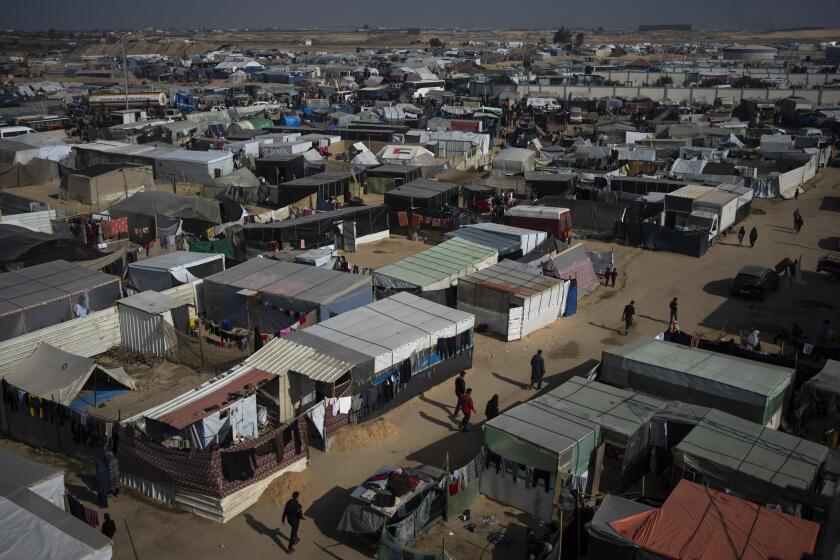FOCUS : Chinese Economic Reform: Is It Enough?
The Chinese Communist Party, in a recently released major policy statement, said it will gradually eliminate controls on most prices and adopt other market-oriented reforms. But it said it would oppose the kind of broad economic restructuring that would place China on a path to capitalism.
The party document calls for less use of Soviet-style central planning and increasing reliance on markets. For example, prices on most goods will be linked to supply and demand, and allowed to fluctuate accordingly.
China also intends to develop wholesale and futures grain markets, allow further growth of private enterprise and increase incentives by tying employees’ wages to the quantity and quality of their work.
However, the document rules out any large-scale privatization of existing state-owned enterprises.
The reforms are designed to stimulate economic growth. What are the obstacles to creating a more efficient economy? Times staff writer George White sought the views of two leading scholars on developments in China.
RAMON MYERS, senior fellow at Stanford’s Hoover Institution:
There are two major dysfunctions in the Chinese economy: low productivity and built-in inflationary pressures that are largely caused by subsidies and highly inefficient state-enterprise firms. The basic issues are not even addressed in the (Chinese government’s) document.
The state-enterprise sector is horribly inefficient. That sector is greatly subsidized, and it’s just killing them in terms of the budget and the inflationary pressures. And they just can’t make them efficient.
The story in the last 10 years is that every time they free up commodity prices, they’ve had to follow with the huge printing of money and that gives you all the problems of pent-up inflation--of too much money chasing goods. It creates a problem they had in 1988 of urban panic buying and a lot of inflation. Inflation is not going away. In fact, it’s getting worse every year. There’s no way this five-year plan will solve this problem one bloody bit.
The only way to do it is to have some fundamental changes in property rights--free up private property, privatize much of the inefficient state- and cooperative-enterprise system and move very quickly to a much more open economy. The leadership should work hard on the political side to develop a more open, inclusive party that can unite and lead the country through a difficult transition period.
MICHEL OKSENBERG, professor, University of Michigan Center for Chinese Studies:
The Chinese face some monumental problems. They are still grappling to find an appropriate balance between a planned economy and a market-oriented system. There is really no consensus among leaders as to how to strike that balance and no real consensus on how fast to push for expansion of the role of the market.
The state sector is proving to be increasingly inefficient. However, the leaders of China realize that if they privatize (state enterprises), they must construct a welfare system . . . because there is no social security net in China. Currently, retired workers get retirement pay from their former place of employment--the state enterprises.
Also, the Chinese do not yet have an efficient tax system for generating revenue. The country’s provinces get their revenue from state enterprises.
In addition, the Chinese do not have an effective banking system. They lack monetary and fiscal tools to manage the economy. Do you privatize before you have instruments in place to guide the economy?
When you have a billion people, there are no easy choices. I can understand why the government wants to go slow on market reforms. However, going slow leaves them with their current set of problems.
CHINA’S ECONOMY AT A GLANCE
1990 figures
Gross domestic product: $409 billion
Inflation-adjusted economic growth: 5%
Imports: $53 billion
Exports: $62 billion
Leading import items: grain (wheat), chemical fertilizer, steel, industrial raw materials, machinery.
Leading export goods: manufactured goods, agricultural products, grains (rice and corn), oil, minerals.
International currency reserves: $26.7 billion (October, 1990)
More to Read
Sign up for Essential California
The most important California stories and recommendations in your inbox every morning.
You may occasionally receive promotional content from the Los Angeles Times.






